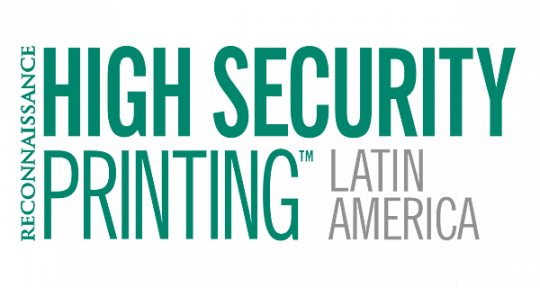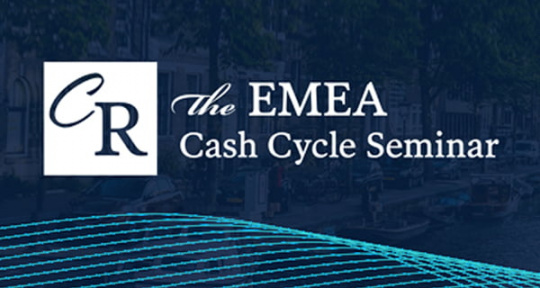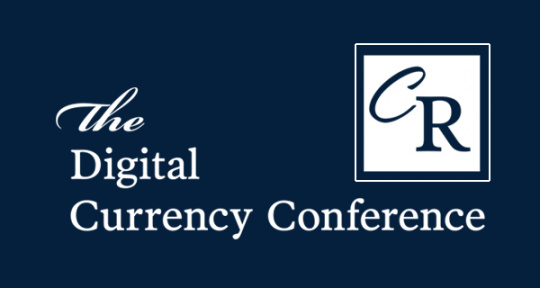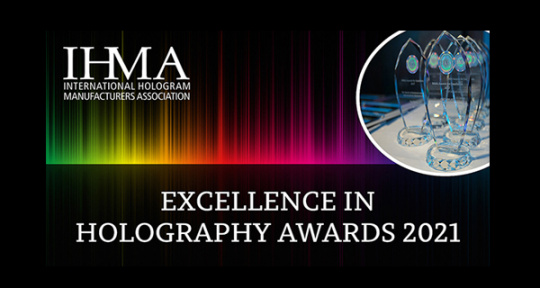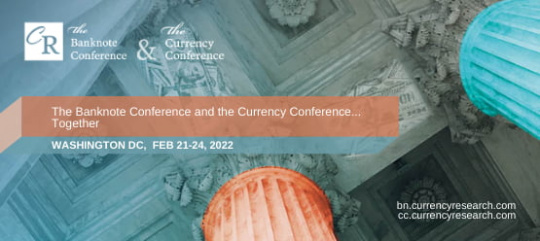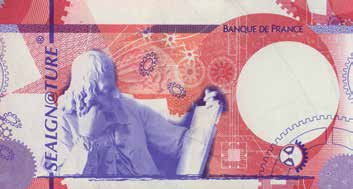
Changing existing traditions: Sealgn@ture banknote digital security feature
26.08.2016Sealgn@ture is the result of ten-year cooperation between the Bank of France and ATT, whose experience in the field of authentication and traceability of retail products and security documents is well-established.
Sealgn@ture is a unique digital code, invisible to the naked eye, and integrated in the banknote substrate in the offset printing process. It has the highest level of counterfeiting protection that makes an element impossible to be imitated (Fig. 1).

The "space" of 64-bit digital code Sealgn@ture (approx. 40 000 dots per inch) contains all information about a banknote, ensuring its traceability during the entire life cycle of a banknote and providing an access to necessary data about it at any time.
The major advantage of an innovative security feature is a facilitated integration, as Sealgn@ture is printed into the banknote substrate and does not require any additional consumable materials (unlike most modern security features, created with special inks, films, etc.), being completely suitable for any banknote design (the adaptation of the feature is also not needed).
Another advantage of Sealgn@ture is a high resistance. The tests have shown that the digital code is completely resistant to time and environment factors, with all banknotes, which are already used, preserving their integrity and being readable as fast as new ones.
Basic technology of Seal Vector® (digital signature)
Sealgn@ture is based on Seal Vector® technology, which has already proved its efficiency in the field of brand protection: for over 10 years the digital code has been used for retail products authentication (luxury brands of French wine, cosmetics, pharmaceuticals, food). Furthermore, the code has been tested in the security printing. This security feature with an integrated digital signature is applied in French passports, ID-cards and checks.
According to the ATT Chief Technology Officer Zbigniew Sagan, who announced this new security feature at ICCOS Europe 2016, it is absolutely impossible to imitate this technology, as due to a unique digital the high level of protection is rooted not in the production process, but in cryptography. In other words, even assuming that a counterfeiter knows how to deploy the code on a banknote in the process of printing, as well as to get all the necessary materials and copy the code with the best devices, the digital signature itself (or digital key) couldn’t be imitated. The counterfeitability tests have proved that even imitations of the best quality are very different from the genuine one (Fig. 2).

To generate the digital signature, an asymmetrical scheme digital code is used (identical to those that protect the chips on credit cards), developed in a standard Public Key Infrastructure (Public Key Infrastructure, PKI).
Authentication of security documents and banknotes is carried out by checking the integrity of data (or physical integrity checking), encrypted in the digital code. All information, embedded in the code, is correlated with data on a product, contained in the ATT database. Each code is unique, and, at the same time, the difference between any two successive codes is only visible with a zoom lens.
The digital code in high security printing looks like a graphic element. In the process of printing a high definition image comes out from the press, and can not be copied completely (imitated by counterfeiters, it won’t function as a digital code). For banknotes, a graphic element should be reduced to the inconspicuous level (Sealgn@ture security feature), however, it is still visible on documents (ATT developed SealCrypt® and SealStamp® for passports, ID-cards, checks, visas and other official state documents).
Reading digital code on documents and banknotes
The effectiveness of security features in the modern world is due not only to the possibility of their imitation by counterfeiters, but also to its identification by ordinary users. In the "era of mobility" smartphones are constantly used all over the world, notwithstanding country or age, with its communication functions loosing its relevance. New versions of mobile phone are produced several times a year. All service companies are trying to keep up with the needs of the population, developing a number of applications for smartphones, allowing users to make mobile phones a portable instrument in all areas of their activities. Improving the performance of smart phones has created a favorable environment, in particular for introducing document and banknote authentication technologies that can compare a received image with the original to detect counterfeits.
ATT is also developing mobile applications to authenticate documents and banknotes with deployed digital security features.
Today, a free offline application is able to read SealCrypt®, used on highly protected government documents. The application has a simple interface with two functions in it: capturing a long (rectangular) digital code and capturing a short (square) feature. The code shape may differ – a geometric shape, design graphic, sign, number, etc. (Fig. 3).

According to the designers, the smartphone application only requires a 8 MP camera (in effect, major elements of the geometric shapes are easily identified by a 5 MP camera; this camera does not recognize alphabetic, numeric and graphic symbols).
One should just capture a document security code with a phone's camera (making a photo is not necessary), and the program will show the user all data on the checked document. If the document is a fake, the original image of the program will not match with the image of a checked document as the digital code produces exactly the original data. Most often, fraudsters counterfeit documents "in haste" – they stick another photo, without changing considerably a name and a surname (they take away one or two letters), few changes are finally introduced to preserve the main structure of the information. Criminals usually do not touch a digital code, because when being copied, it looses its resolution that is noticeable even without special devices.
The new security feature Sealgn@ture can be read by an HD scanner, by a smartphone with an add-on lens or via a special application Vector Mobile. A standard mobile phone camera is not able to "capture" a tiny code, however, said Zbigniew Sagan, ATT is already developing a special program to recognize the element with a low resolution camera, and they will bring it to market soon.
Joint project of ATT and the Bank of France: testing and introducing Sealgn@ture on circulating banknotes
The main requirements of the Bank of France to a new banknote security feature were following:
• suitability for any substrates based on digital data
• no need to use additional consumable materials in the printing process
• high level of protection against counterfeiting
• high resistance to wear of time
As a result, in 2006, after studying a number of options, the Bank of France chose Seal Vector® technology by ATT.
In the first stage of adapting the technology to the banknote industry, the appropriate matrix structure was needed. It should have been resistant to mechanical damage and pollution. It was important to determine the size and shape of the matrix cell, a minimum space between the printed codes and a minimum print resolution in order to read the element.
The wear tests showed that the element matrix remains intact even if the note itself is considerably damaged (Fig. 4).

To test the resistance of the security feature to imitation, special fake banknotes, provided by experts of the Forensic examination center (Counterfeit Research Center, CRC) of the Bank of France, were used. The experts didn’t have an access to the original file for printing, and copies, printed on the original devices with an original banknote paper and ink, were much different in quality from the originals.
The second phase of a joint pilot project was the development of Sealgn@ture. Digital code by ATT, which has been used since 2003 in other spheres apart from security printing, is rather big. Therefore, it was not originally suitable for the banknote industry. It was decided to reduce the code, as it would be invisible to the naked eye, but, at the same time, readable by devices.
The first banknote with the element was issued in 2010. It was decided to hide the digital security code in the image of an antelope on the banknote. Thus, Sealgn@ture has become a part of the banknote design, and to detect that the image of the antelope contains a security feature (the ink for the feature was the same as for the animal image), is possible only by two positional points, fixed above the diagonal edges of the element (Fig. 5).

In 2013, a new series banknote of 10 000 francs was issued for the French Pacific Territories. As a part of a pilot project on quality evaluation, Sealgn@ture was firstly introduced on the regular circulation banknotes (Fig. 6).

In the near future ATT and the Bank of France are planning to adapt Sealgn@ture to a number of existing security features of the first level (optically variable elements). According to the Bank of France, as the innovative digital code is suitable for any banknote substrate (paper, polymer, hybrid) and can be reduced to almost any size, it has a great future in the banknote industry. In the long term, Sealgn@ture will not only completely replace the traditional machine-readable security features, but also partially "eclipse" basic banknote identification elements, including simple serial numbers.
